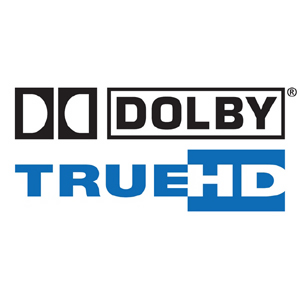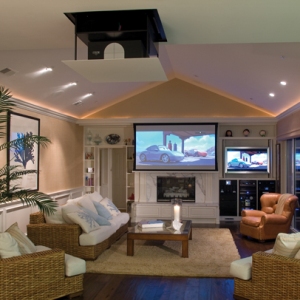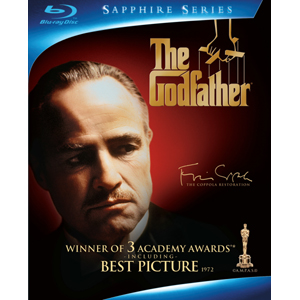 Craig Eggers of Dolby Laboratories explains the differences between the company’s audio formats and the connection options to facilitate these formats’ playback.
Craig Eggers of Dolby Laboratories explains the differences between the company’s audio formats and the connection options to facilitate these formats’ playback.
As a victim of circumstance the company has had a difficult time educating the public about the advantages of its Dolby TrueHD format, but Craig Eggers, senior manager, partner marketing for Dolby Laboratories, says the company is working to inform consumers about the parameters of its lossless audio format, which is available on Blu-ray discs.
A Recent History of Surround Sound
Eggers says that consumers interested in the different formats should start by examining Dolby’s discrete 5.1 format that’s available as part of the digital television and home video disc formats.
“The format that’s part of the [DTV] broadcast standard and DVD is Dolby Digital. Dolby Digital is a lossy, compressed format. It was designed to eliminate redundancies within the decoding process. This enables us to take a big file and compress it down to a file that’s compatible with DVD and broadcast TV,” Eggers explains.
“Dolby Digital Plus builds upon this. Dolby Digital has a bit rate 384/448kps. The format is capable of going 640kbps and receivers are capable of decoding that bit rate. In broadcast [TV] and DVD, Dolby Digital is limited to 448kbps and 5.1. With Dolby Digital Plus we can add more bits than Dolby Digital Plus—6Mbps and it can support 7.1 channels of discrete audio.”
Eggers mentions that as Dolby Digital evolved, companies have turned to the Dolby Digital Plus format, which is built upon the foundation of Dolby Digital to increase the quality of their products.. He says companies like Vudu now use Dolby Digital Plus because of its variable bit rate efficiencies that enable it to provide a 1080p level of video while also offering a quality surround sound experience.
Blu-ray Ushers in Better Sound
Taking the quality level higher, Dolby’s lossless compression audio format Dolby TrueHD provides consumers with the same quality level that the recording engineers hear with master recordings.
Eggers says that Dolby TrueHD is available as part of the Blu-ray format and they support legacy components that aren’t compatible with Dolby True HD by embedding a higher bit rate 640kbps Dolby Digital soundtrack into the audio to ensure a high level of surround sound.
To experience the company’s lossless surround format, Eggers explains that consumers have the choice of using either HDMI or RCA cables between their Blu-ray players and receivers.
“A lot of newer AV receivers have external audio inputs and with these inputs, what you need to look for in a BD player is one that internally decodes Dolby TrueHD and that comes equipped with multichannel analog outputs,” says Eggers.
“The player has to decode Dolby TrueHD internally and it must be equipped with multichannel analog inputs. Taking it a step further, if the Blu-ray disc player can decode Dolby TrueHD, it can decode the format and it can pass through HDMI as PCM audio and it then sends the signal to a receiver with early versions of HDMI [1.1, 1.2]. Newer receivers with HDMI 1.3 have built-in Dolby Digital Plus and TrueHD decoders and they enable the Blu-ray player to send a Dolby Digital Plus or Dolby TrueHD bitstream signal to the receiver where it’s decoded inside the receiver.”
Audiophile Pedigrees Not Necessary
According to Eggers, the best part of the Dolby TrueHD format regardless of how it’s achieved in the home is the final result, which he says is immediately noticeable to the listener.
“I think if you have a quality system, there is an audible difference and what they [consumers] will experience is a warmer signal with more atmosphere and presence, and it is very natural sounding,” states Eggers.
“A good example is the ‘Chris Botti in Boston,’ disc. It has warmth, presence and its sound contributes to the, ‘you are there experience.’”
If all of this information still isn’t enough to clarify the benefits of Dolby TrueHD, Eggers advises consumers to visit the Dolby Laboratories’ Web site, which offers lots of detailed materials on the topic.
by Robert Archer
http://www.electronichouse.com/article/dolby_talks_truehd_format_differences/
Custom Installation Services, LLC – Home Theater, Audio and Video Services, Home Automation in North Carolina and South Carolina



 Tricks that’ll make your family room have that home theater vibe.
Tricks that’ll make your family room have that home theater vibe. A slew of classic titles get star Blu-ray treatment this week, like The Godfather, Casablanca, Gone with the Wind and more.
A slew of classic titles get star Blu-ray treatment this week, like The Godfather, Casablanca, Gone with the Wind and more.